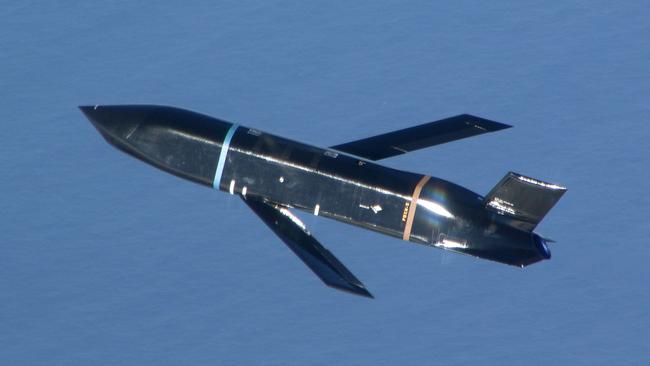
These are huge decisions. The government is right to make them. The process has been led by Scott Morrison and Defence Minister Linda Reynolds.
The capability decisions are eye-watering in their consequences, and their dollar amounts.
But they are underpinned by a hard-headed and undeniable strategic analysis.
The government on Wednesday publishes the Strategic Update and the Force Structure Plan.
The Strategic Update recognises how severely Australia’s strategic circumstances have worsened. In the 2016 Defence white paper the assessment was that military conflict in our region between major powers was a “remote” possibility. In Wednesday’s Strategic Update that has changed to merely “unlikely”.
When major power conflict moves from remote to unlikely, that is a near catastrophic deterioration in strategic outlook. Let’s be very blunt. There is more possibility of war, or of more limited military conflict, in our region than has been the case for many decades.
Australia faces this danger in a moment when everything has been thrown into disarray by COVID-19. It has exposed our vulnerable supply chains and it has accelerated every negative trend in the region.
The government will refocus our defence force on our region, with less emphasis on the Middle East. This does not mean immediate drawdown of our remaining forces in the Middle East but the era of Iraq and Afghanistan having any effect at all on our force structure, or any priority in our deployments, is surely gone.
In the 2016 Defence white paper we had three balanced objectives — domestic, regional and global. Now our priority will be overwhelmingly regional, and within our region we plan to Shape, Deter and Respond. That means we want to shape our environment, deter attacks against us and, when necessary, respond with decisive military force.
But the only question that ever really counts in defence, to quote Lenin, is this: what is to be done?
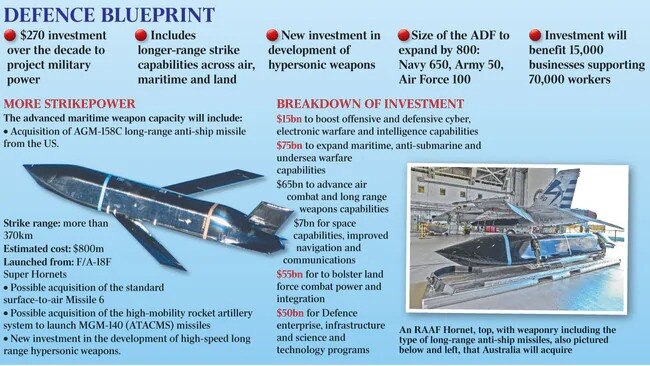
The Morrison government is going to do a great deal. Over the next decade it will commit $270bn to new and enhanced defence capabilities. That includes $75bn for maritime forces, $65bn for air capabilities, $55bn for land forces, $15bn for cyber and information warfare and $7bn for space capabilities. All five — maritime, air, land, cyber and space — are now fully fledged domains of potential warfare.
There are a number of big specific items included. There will be two more support ships to help our LHDs (landing helicopter dock or amphibious assault ships) and other naval vessels. The offshore patrol vessels will have greater combat lethality, with smart sea mines they can deploy or counter. This gives us important additional defensive options.
The government will also go ahead with the purchase, at about $800m, of up to 200 US long-range anti-ship missiles. Initially, these will be deployable on our Super Hornet Fighters but in due course they could also be carried by our F-35s. The LRASMs have a range of nearly 400km. But you have to add to that the effective range of the Super Hornets, perhaps extended by aerial refuellers. Australia would have the capacity to hit adversary ships hundreds of kilometres from our shores.
The LRASM also represents a difference in type. It is extremely sophisticated with independent targeting capabilities. It can team up with its buddies and attack in swarms or mini-swarms. It carries a big payload: 450kg. It can take evasive measures on its way to its target. It’s very hard to shoot down, very hard to defend against. If you’re planning maritime damage against Australia, it is a capability of which you would have to take account. LRASMs have not been in use in the US for a year. That they were approved for sale to Australia so quickly demonstrates how close the alliance with the US is and the benefits it can deliver.
It is the first step in Australia acquiring broader missile strike capability. The government also plans to buy more F18 Growlers, the adapted version of the F18 fighter that specialises in electronic warfare. EW blinds and disables an opponent’s forces.
There will be heavy investment in the development of hypersonic weapons, necessary for offensive and defensive purposes. China and Russia are putting massive effort into hypersonic missiles. Hypersonic weapons travel at many times the speed of sound and, because of this speed and the angle of their re-entry, are exceptionally difficult to defend against. The US too is devoting billions to developing hypersonic weapons. Canberra wants to be part of this, both so that it is up to the minute on any ability to defend against such weapons and so that Australia too can acquire them when they are reliably deployable.
We have not had a strong strike capability since the retirement of the last F111s a decade ago. They were a magnificent plane in their day, though in terms of cost overruns, delays and controversy during construction and acquisition they were right up there. Canberra may in due course invest in another generation of strategic bomber, but the government has made the decision to pursue new strike capability through missiles. This is the right decision. This is the strike technology of the future. Because we are such close allies of the US, we can stay on the missile technology glide path, though we are right to invest in our own sovereign capabilities. All of this costs a lot of money. But it is an urgent national necessity.
The government’s announcements will fully maintain all funding commitments of the 2016 Defence white paper. The government is almost unique in actually honouring a white paper.
The government plans to decouple defence expenditure from the size of the GDP, at least in terms of public presentation. However, given the economy will shrink for a while because of COVID-19, while defence spending at the very least is maintained in real terms, the defence budget will sail well over the talismanic 2 per cent of GDP ambition. This means that as a nation we are rightly increasing the relative size of our defence effort.
There is nothing strange or militaristic about Australia’s actions. Other nations – India, Japan, Singapore and Vietnam among them – are doing the same thing for more or less the same reasons. The extremely assertive behaviour of China over the last three years, especially the last 12 months, has changed the strategic calculations of our region.
Australia is responding to more than just Beijing’s behaviour. In the next 10 or 15 years our region will host half of the world’s submarines. Those Australian jackasses who claim subs are obsolete seem to know something that every significant military power in the world, all of which are increasing their submarine fleets, have missed.
Submarines are a fundamental piece of Australia’s deterrence capability. They provide unmatched surveillance and help secure our maritime approaches. It is impossible to imagine any serious effort at securing Australia that does not involve submarines. There is no prospect of Australia acquiring nuclear subs in the next decades and the nuclear sub debate is a hobby horse for cranks.
In the meantime, the government will extend the life of the Collins-class subs and as it does so it will gradually introduce into them much of the state-of-the-art technology that will ultimately go into our French-designed subs. The more strike and deterrence capability Australia has, the less likely it is we would ever have to use it.
It is an axiom of security that you plan against capability rather than intent. For the past 20 years Beijing has been engaged in one of the most intense military build-ups in modern history. We must take responsibility for our own national security. This may be a pivotal day in our history.


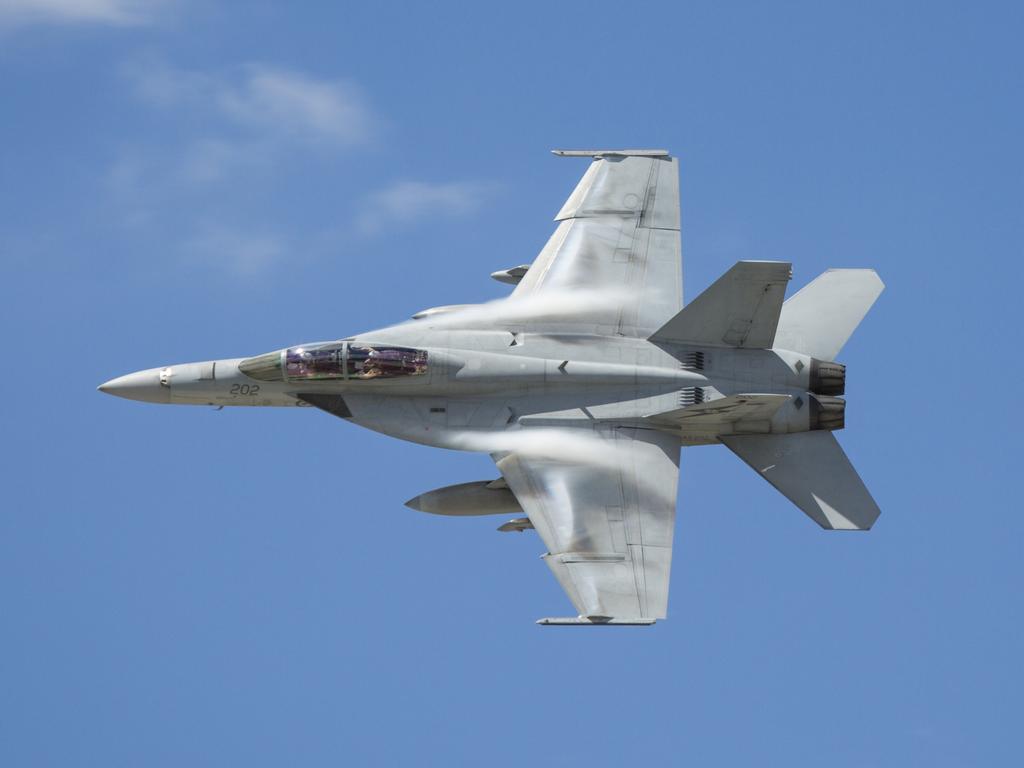
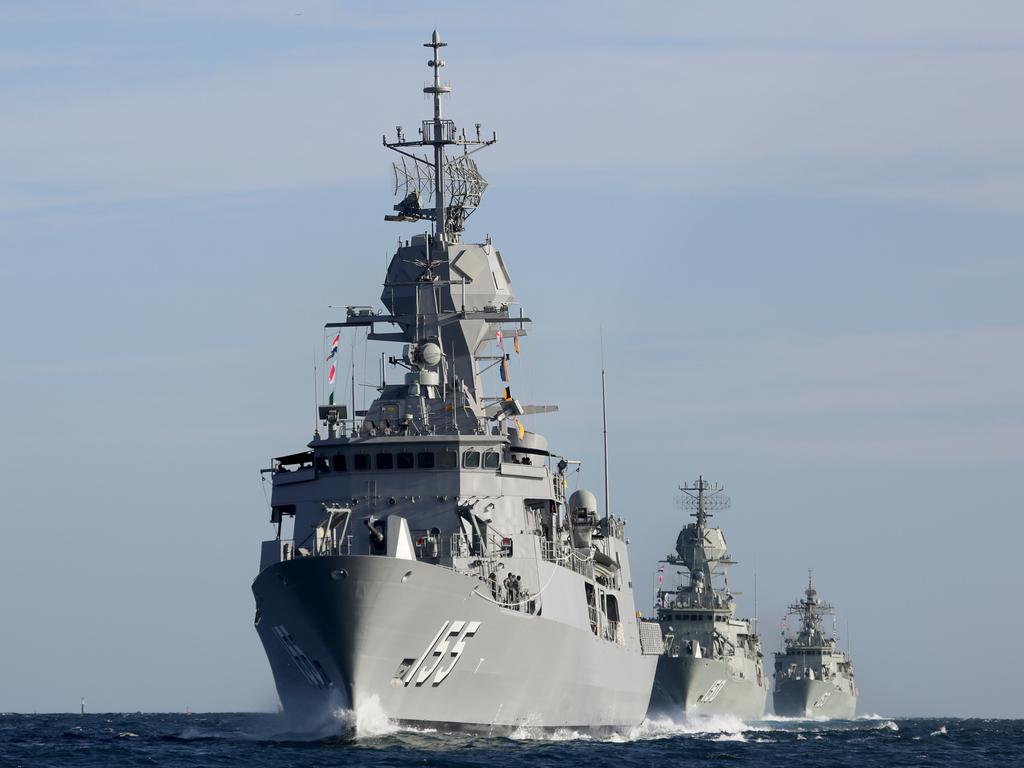
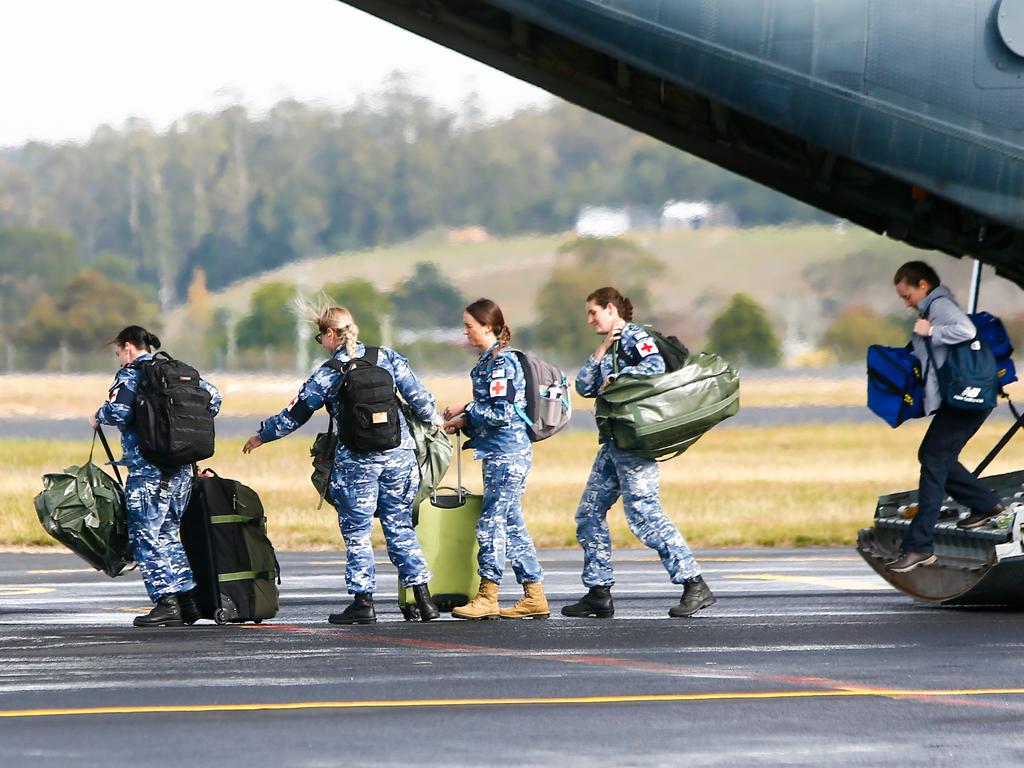


The Morrison government is changing the international and strategic orientation of the Australian nation. We are now, for the first time since the Vietnam War, living in a region with a strong chance of major power conflict. And we have decided to acquire serious military strike power as part of our deterrence.